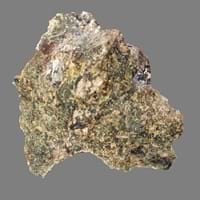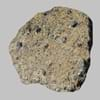Definition
Harzburgite is a plutonic rock of the peridotite group consisting largely of orthopyroxene and olivine
Coquina is a sedimentary rock that is composed either wholly or almost entirely of the transported, abraded, and mechanically-sorted fragments of the shells of molluscs, trilobites, brachiopods, or other invertebrates
Origin
Germany
European Foreland Basins
Discoverer
Unknown
Unknown
Etymology
From the name of a town in Harzburg, Germany
From Concha (Latin)+ Coquina(Spanish) +conch(English)= Couquina (mid 19th century)
Class
Igneous Rocks
Sedimentary Rocks
Sub-Class
Durable Rock, Medium Hardness Rock
Durable Rock, Soft Rock
Group
Plutonic
Not Applicable
Other Categories
Coarse Grained Rock, Opaque Rock
Coarse Grained Rock, Opaque Rock
Texture
Phaneritic
Clastic
Color
Dark Greenish - Grey
Beige, Buff, Orange
Durability
Durable
Non-Durable
Appearance
Rough and Shiny
Layered, Banded, Veined and Shiny
Interior Uses
Decorative Aggregates, Homes, Interior Decoration
Decorative Aggregates, Homes, Hotels, Interior Decoration
Exterior Uses
As Building Stone, As Facing Stone, Garden Decoration, Office Buildings, Paving Stone
Garden Decoration, Office Buildings
Other Architectural Uses
Curbing
Curbing
Construction Industry
As Dimension Stone, Cobblestones
Building houses or walls, Construction Aggregate
Medical Industry
Not Yet Used
Not Yet Used
Antiquity Uses
Artifacts, Monuments, Sculpture, Small Figurines
Artifacts, Monuments, Sculpture, Small Figurines
Commercial Uses
Creating Artwork, Gemstone, Jewelry, Source of Chromite, Platinum, Nickel and Garnet, Source of Diamonds
Creating Artwork
Types
Not Available
Not Available
Features
Constitutes upper part of the Earth's mantle, Generally rough to touch, Is one of the oldest rock
Available in Lots of Colors and Patterns, Is one of the oldest rock
Archaeological Significance
Famous Monuments
Data Not Available
Data Not Available
Famous Sculptures
Data Not Available
Data Not Available
Formation
Harzburgite is a fine-grained, hard rock which is a type of metasomatite, essentially altered basalt. It forms with or without crystallization, either below the surface as intrusive rocks or on the surface as extrusive rocks.
Coquina is a sedimentary rock which is formed when billions of small clam-like seashell, called Coquina, or cockleshell are die and hence are deposited, buried and turns into a rock when pressure is applied.
Mineral Content
Amphibole, Chromite, Garnet, Magnesium, Olivine, Phlogopite, Plagioclase, Pyroxene
Apatite, Augite, Bronzite, Calcite, Chert, Chlorite, Clay Minerals, Epidote, Feldspar, Garnet, Micas, Muscovite or Illite
Compound Content
Ca, Fe, Mg, Potassium, Silicon Dioxide, Sodium, Titanium Dioxide
CaO, Carbon Dioxide, Iron(III) Oxide, MgO
Types of Metamorphism
Impact Metamorphism
Not Applicable
Types of Weathering
Chemical Weathering, Mechanical Weathering
Biological Weathering, Chemical Weathering, Mechanical Weathering
Types of Erosion
Chemical Erosion, Sea Erosion
Coastal Erosion, Sea Erosion, Water Erosion, Wind Erosion
Grain Size
Coarse Grained
Coarse Grained
Fracture
Irregular
Irregular
Porosity
Less Porous
Highly Porous
Luster
Shiny
Dull to Vitreous to Submetallic
Cleavage
Imperfect
Not Available
Toughness
2.1
Not Available
Specific Gravity
3-3.01
1.10-2.24
Transparency
Translucent to Opaque
Opaque
Density
3.1-3.4 g/cm3
2.8-2.9 g/cm3
Specific Heat Capacity
Not Available
Resistance
Heat Resistant, Pressure Resistant, Wear Resistant
Heat Resistant, Impact Resistant, Pressure Resistant, Wear Resistant
Deposits in Eastern Continents
Asia
Japan, Oman
Not Yet Found
Africa
South Africa
Not Yet Found
Europe
France, Germany, Italy, Venezuela
United Kingdom
Others
Hawaii Islands, Mid-Atlantic Ridge
Not Yet Found
Deposits in Western Continents
North America
Canada, USA
USA
South America
Not Yet Found
Not Yet Found
Deposits in Oceania Continent
Australia
Not Yet Found
Not Yet Found










